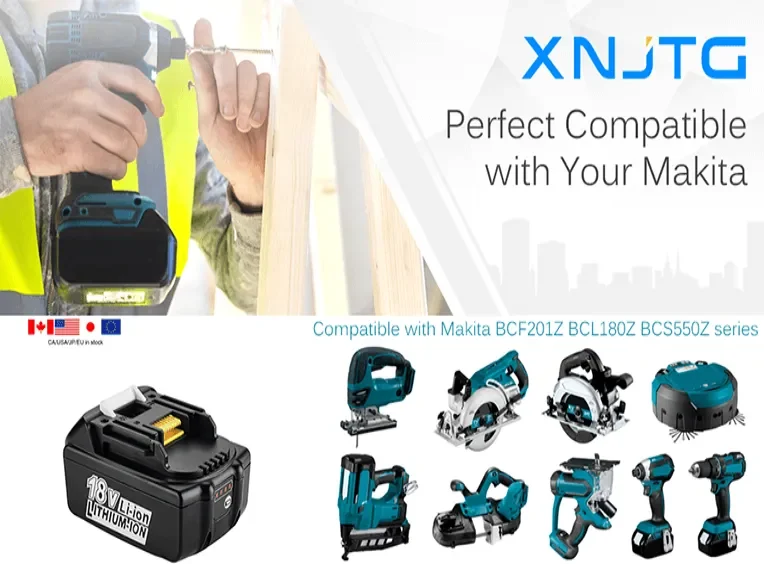Makita 18V Battery Charger Buying & Maintenance Guide
A proper charger is just as vital as a healthy battery for peak cordless tool performance. This guide covers Makita’s 18 V charging ecosystem—from model selection and setup to troubleshooting and upkeep—so you pick the right charger, use it safely, and extend both battery and charger lifespan.

Understanding Makita’s 18V Charging Platforms
Makita’s 18 V ecosystem centers on the LXT (Lithium‑ion Xtreme Technology) platform, which standardizes batteries, chargers, and tools around a robust, high‑drain chemistry. At the heart of this system are 18 V LXT batteries—ranging from compact 1.5 Ah packs for lightweight tasks to 5.0 Ah and higher “XC” (eXtreme Capacity) cells for extended runtime. All batteries plug into any LXT charger, but Makita offers several models to suit different workflows. Both feature LED indicators that cycle from red (charging) to green (complete), plus diagnostic alerts for damaged or overheated cells. For field applications, the DC18SD “dual‑port” charger tolerates wider input‑voltage swings and can top off two packs sequentially at slower rates—ideal when only limited power is available. Behind each charger’s circuitry lies Makita’s built‑in battery management system, which balances individual cell voltages, monitors temperature, and prevents over‑charge or over‑discharge. Because all LXT batteries and chargers share the same interface, it’s easy to scale your setup: simply click any 18 V LXT pack into the charger you have on hand, and Makita’s smart charging algorithms automatically optimize current flow to preserve cell health and deliver reliable, fade‑free power every time.
Charger Models
- DC18RC (Standard): 4 Ah in ~45 min, built‑in fan cooling.
- DC18SD (Diagnostic): Same speed + LED health panel.
- DC18RD (Rapid): 4 Ah in ~25 min, enhanced heat management.
Charging Profile
1. Constant current → 2. Constant voltage → 3. Cool‑down cycles (fan).
Safety Features
- Overheat protection
- Reverse‑polarity detection
- Automatic shut‑off at full charge
Key Selection Factors
- Battery Compatibility: Designed for 18 V Li‑ion (BL1850) and marked NiMH/NiCd.
- Charge Speed: Standard vs. rapid (~45 min vs. ~25 min for 4 Ah).
- Smart Features: DC18SD diagnostics, maintenance mode.
- Mount & Power: 120 V or 230 V versions; wall‑mount slots vs. bench‑top footprint.
OEM vs. Aftermarket Chargers
When deciding between an OEM Makita charger and a third‑party alternative, it’s important to weigh long‑term reliability and safety against upfront cost savings. Makita’s genuine chargers—whether the rapid‑charge DC18RC, dual‑bay DC18RD, or wide‑voltage DC18SD—are engineered with proprietary battery management firmware that precisely balances individual cell voltages, controls charge currents dynamically based on pack temperature, and automatically vents heat through built‑in fans. They undergo rigorous UL and CE safety testing, integrate fault‑diagnostic indicators to flag damaged or overheated cells, and carry the manufacturer’s warranty coverage, ensuring that both your batteries and your tools remain protected. Aftermarket chargers often tout universal compatibility and lower price points. Furthermore, using non‑OEM chargers can sometimes void your tool or battery warranty, and inferior build quality may introduce electrical noise or poor contact connections.If you maintain multiple batteries in rotation, operate on a tight budget, and are willing to accept slightly slower charge rates , a reputable, safety‑certified aftermarket charger can serve as an economical backup.
XNJTG replacement batteries can ensure the safety of your person and tools, give you the best quality products, meet most of your needs, our products have over-current, over-charge, temperature protection, etc., and we have relevant international certifications, such as: UL, CE, RoHs, FCC, KC, etc., you are welcome to visit our factory at any time
| Aspect | Genuine Makita | Third‑Party Alternatives |
| Compatibility | Guaranteed | Must verify specs |
| Safety Certs | UL, CE, PSE | Often missing |
| BMS Support | Full diagnostics | Varies |
| Price | Premium | 50-60% less |
Installation & Best Practices
- Placement: Flat, ≥10 cm clearance, ventilated.
- Temperature: 5 °C–40 °C operation.
- LED Codes:
- Red = fast‑charge
- Flashing green = cool‑down
- Green = full
- Red/green flash = error
Troubleshooting
1. No LEDs/Power: Check outlet, cord, fuse.
2. Error Flashes:
- Rapid red → temp fault
- Alt. red/green → polarity or handshake
3. Slow Charge: Aging caps/transformer—consider repair or replacement.
4. Overheating: Clean vents; replace fan if silent.
Maintenance
- Monthly: Dust vents, wipe contacts with alcohol.
- Firmware: Some DC18SD units can be updated at service centers.
- Storage: Unplug and keep in cool, dry place away from sunlight.
FAQ
1.Can I charge two packs at once?
Only dual‑slot models support simultaneous charging.
2.Will a Makita charger harm compatible batteries?
Unlikely if both charger and pack match Makita specs.
3.When to retire a charger?
Persistent slow charge, fan failure, or unresolvable error codes.
Selecting the correct Makita 18 V charger, following safe installation, and performing regular upkeep will keep your batteries and tools running reliably for years.